To practice trail at home, all you need are four poles set up to make a 6-foot box. With that box you can practice different elements you might come across without needing an entire course setup in your arena. Here I’ll show you some of my favorite trotting exercises to practice with a box and explain how they can help with your horse’s foot placement, your ability to guide your horse, and build your horse’s confidence over the poles. If your horse is still green in this event, it’s important to stay patient as you incorporate these exercises into your riding routine; you don’t want your horse to become anxious around poles.
[READ ABOUT: Trail-Class Back-Through]
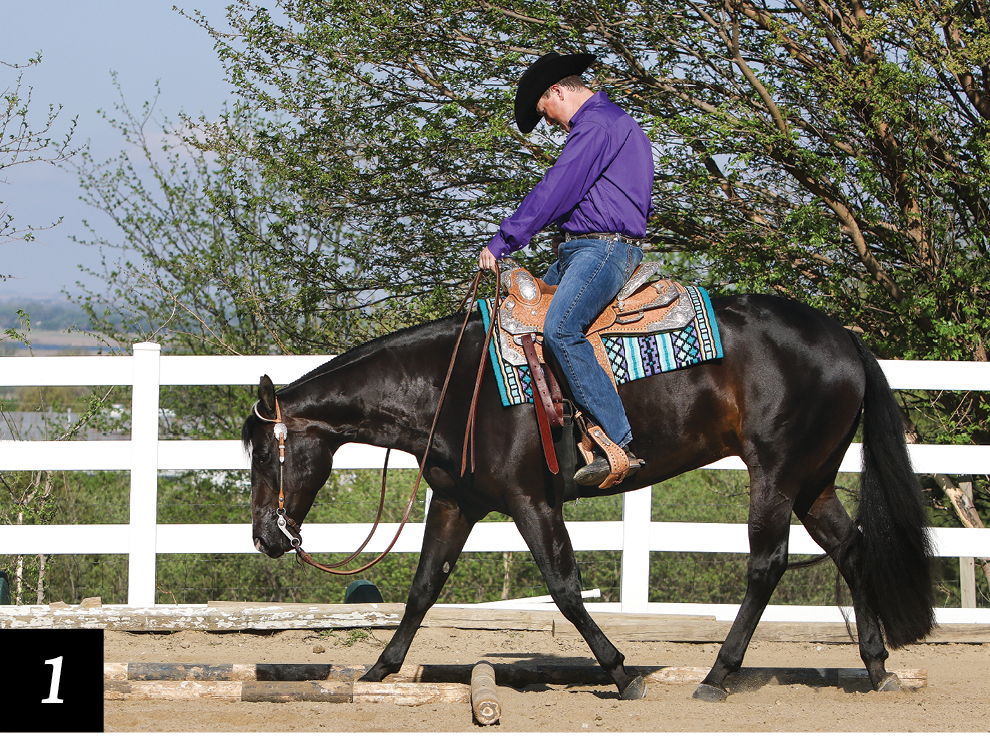
One
I start by trotting my horse through the poles in a straight line. I give my horse plenty of time to get straight and aim to land her front foot 6 to 8 inches before the first pole to ensure that she’s at the correct distance to get over the pole without chipping it (adding an extra step that’s usually a very short stride) or hitting it. I break my box up into thirds to help with guiding and distance. Once my horse’s front foot is over the first pole I look down and to the right in the first 1/3 of the box to help rate my horse’s stride. My goal is to fit two strides in the box.
[READ ABOUT: Working the Trail Gate]
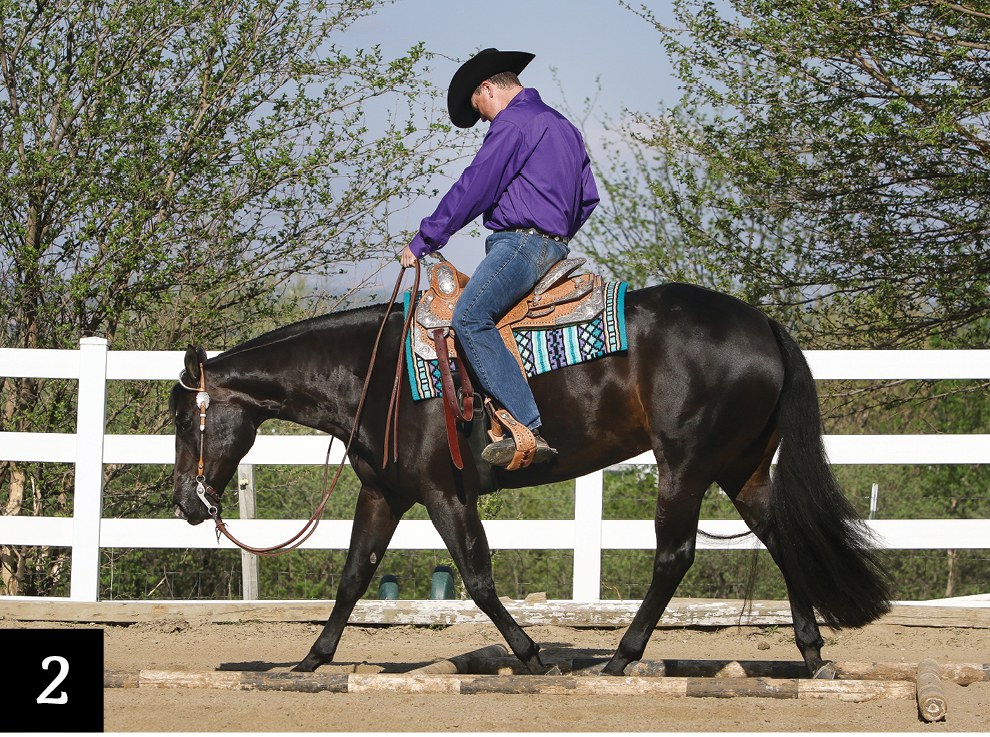
Two
Here my horse has one foot over the second pole and I’m looking down 1 foot past the pole, which helps me know where she’s placing her right front foot. As I finish my box, I approach my negative space (the space between obstacles). To keep the forward motion I require to get my horse’s hindquarters over the pole, I imagine there are two additional 3-foot poles—which is one trot stride—so my body doesn’t stop riding after my horse’s front feet get over the pole. Because my horse is slower, my body is behind the motion and I’m using my seat and legs to push her forward. I’m not focused on speed, but more on the length of her stride through the box.
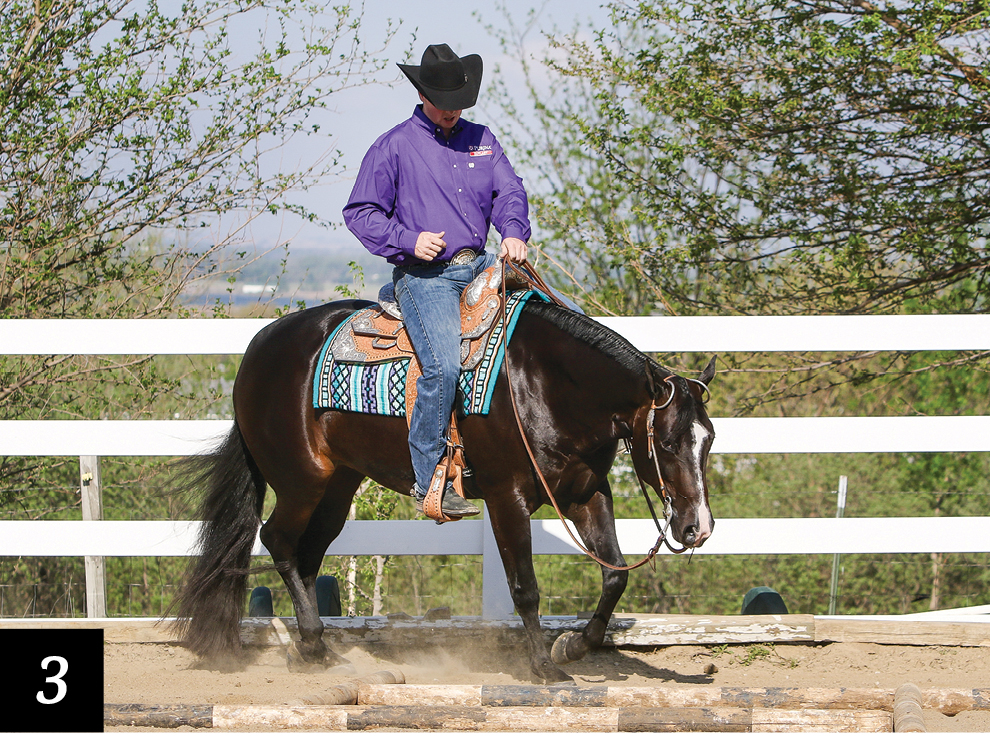
Three
When I’m trotting through a box, I aim for the center of it and make sure my horse isn’t leaning one direction or the other. Here I feel my horse drift to the left. To counter that, I take my horse to the right and trot through the box this direction, aiming for the middle. Once I get through the box this direction, I continue the clover-leaf pattern by going a different direction and approaching the box again. This teaches your horse not to lean and also helps you get comfortable with steering.
[READ ABOUT: Trail Class Lope-Overs]
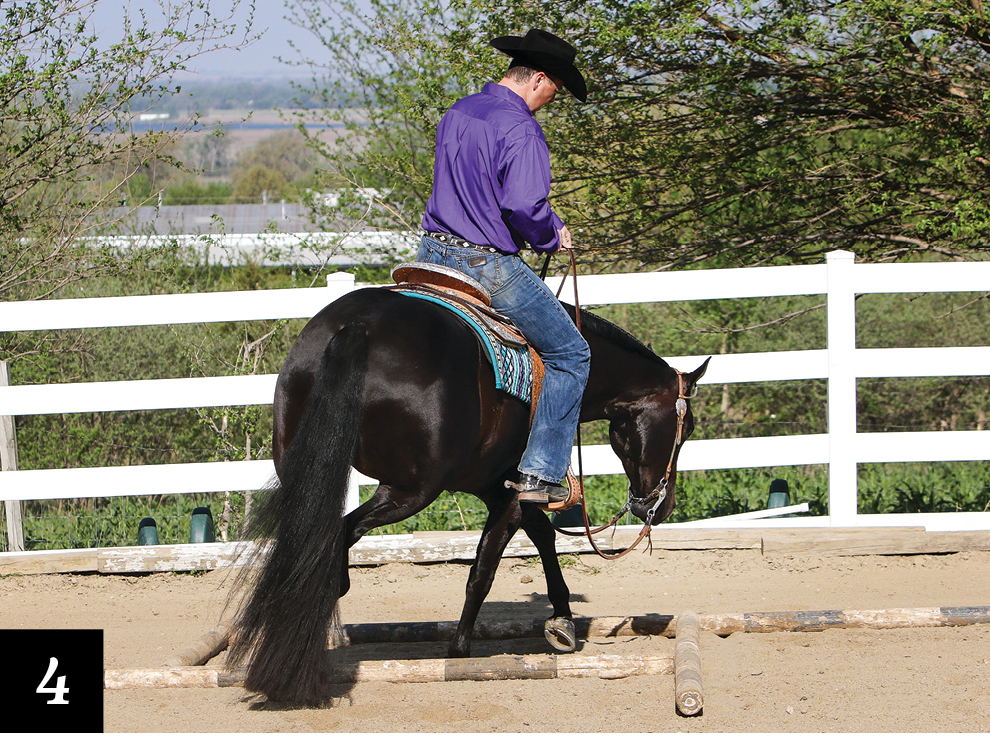
Four
Once my horse and I are comfortable going straight, I up the difficulty by asking her to go right out of the box rather than straight. This helps with steering and foot placement, plus helps eliminate any anticipation and teaches my horse to listen to where I want her feet to land. I approach the first pole on the left 1/3 portion of my box so I can fit two strides in the box. Once my horse’s front foot lands before the first pole, I start turning to the right. To do this, I put more weight on my right seat bone, turn my hips to the right, and look down and to the right to see where I need my horse’s feet to land. Be sure to practice this both directions and be patient as you and your horse learn more about foot placement; you don’t want him to become intimidated.
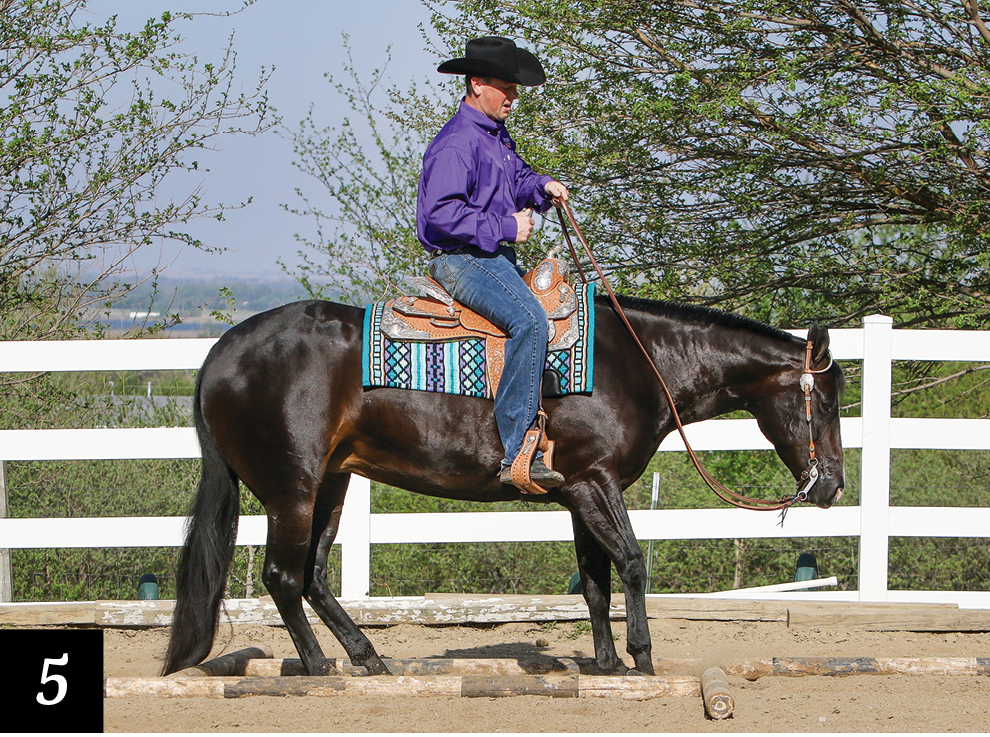
Five
To change it up, I ask my horse to stop in the box. This maneuver is very popular in the show pen and is usually followed with a turn. However, you must have a solid stop outside the box to perfect this maneuver. If your horse dribbles down to the stop you’ll find yourself hitting poles—or even worse, outside the box. As I trot, I count my horse’s trot stride in a one-two rhythm so I know where my horse’s feet are. As I approach the pole to the box I think to myself one, two. Once the first foot gets over the pole, I start my count again with one, and then ask for the stop on two. I sit down in my seat and ask my horse to stop knowing that all four feet will be in the box. If my horse is having trouble stopping in a 6-foot box, I’ll increase it to 8 feet and work my way back down to build confidence.
[READ ABOUT: Trail Class Tips]
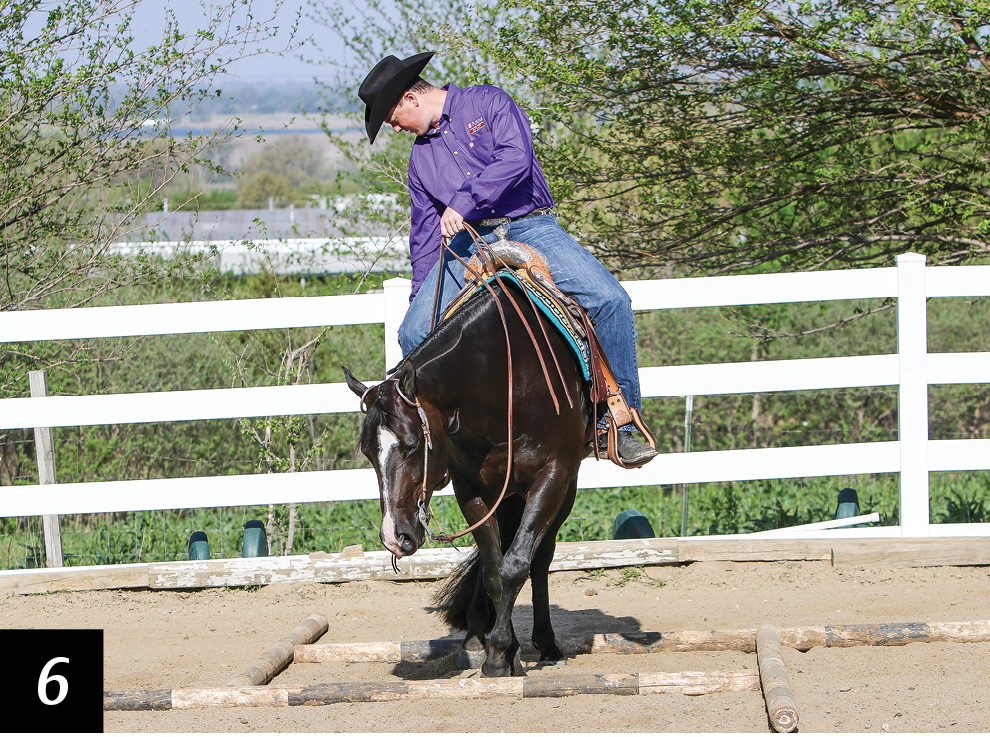
Six
After I can successfully complete a stop in a 6-foot box, I make it more challenging by asking my horse to perform a turn to the right. To give myself extra room, I enter the box on the left side and stop there, so my horse has more room to turn her front end. To avoid hitting the box, all four feet must be moving when I turn. To do that I put my left leg forward to push my horse’s shoulders around and keep my right leg back to help guide her hip to the left. Since I’m turning to the right, I turn my hips in that direction and look down and a little behind my horse’s inside hind leg to help guide my horse. I don’t look outside the box or at my poles because I don’t want her to step near or to the outside of the poles. When I’m working a green horse, I don’t focus on speed but on the accuracy of the turn. Once my horse is comfortable turning in the box and knows where her feet are within the poles I’ll ask for more speed to increase the degree of difficulty.
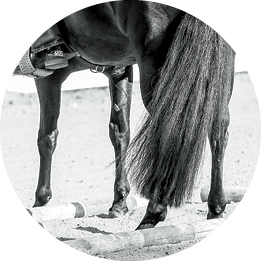
Ace Your Back-Through…
The back-through in a trail class might be one of the slower maneuvers you face, but it’s also one of the most difficult to master. Micah Hansen breaks down how to stay out of the penalty box during this obstacle. Click here to read more.






